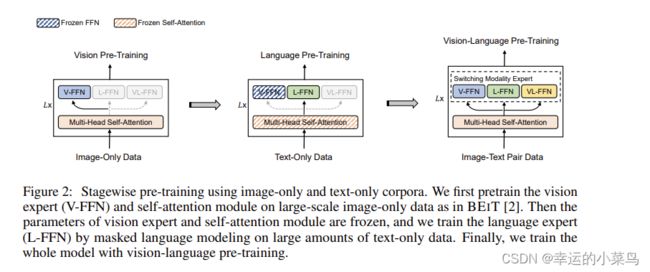- [论文阅读]Distilling Step-by-Step! Outperforming Larger Language Models with Less Training Data and Smal
0x211
论文阅读语言模型人工智能自然语言处理
中文译名:逐步蒸馏!以较少的训练数据和较小的模型规模超越较大的语言模型发布链接:http://arxiv.org/abs/2305.02301AcceptedtoFindingsofACL2023阅读原因:近期任务需要用到蒸馏操作,了解相关知识核心思想:改变视角。原来的视角:把LLMs视为噪声标签的来源。现在的视角:把LLMs视为能够推理的代理。方法好在哪?需要的数据量少,得到的结果好。文章的方法
- 【论文阅读】【IEEE TCYB 2023】Edge-Guided Recurrent Positioning Network forSalient Object Detection in Opt
引言任务:光学遥感图像中显著目标检测论文地址:Edge-GuidedRecurrentPositioningNetworkforSalientObjectDetectioninOpticalRemoteSensingImages|IEEEJournals&Magazine|IEEEXplore代码地址:前置知识一、摘要目前由于光学rsi中目标类型多样、目标尺度多样、目标方向众多以及背景杂乱,现有S
- 大模型服务的推理优化探索
半吊子全栈工匠
【引】有的事情别人不问时我们明白,一旦要我们解释它我们就不明白了,而这正是我们必须留心思索的东西。于是,开启了一次又一次的论文阅读之旅。开发并部署大模型应用肯定要考虑它们的服务成本。然而,钱并不是唯一的考虑因素,如果不能解决模型性能方面的问题,即使有很大的预算,大模型服务仍会受到影响。本文尝试讨论将LLM推理服务更改为高吞吐量引擎的挑战与应对方法。1.大模型服务面临的挑战大模型的能力令人惊叹,但其
- ER综述论文阅读-Emotion recognition in EEG signals using deep learning methods: A review
今天早睡了
情绪识别EmotionRecognition论文阅读深度学习人工智能
EmotionrecognitioninEEGsignalsusingdeeplearningmethods:AreviewQ1期刊,2023论文链接:https://d1wqtxts1xzle7.cloudfront.net/105887899/emotionreview-libre.pdf?1695460941=&response-content-disposition=inline%3B+f
- 【论文阅读】AdaCtrl: Towards Adaptive and Controllable Reasoning via Difficulty-Aware Budgeting
quintus0505
LLM论文阅读语言模型
AdaCtrl:TowardsAdaptiveandControllableReasoningviaDifficulty-AwareBudgeting3Method3.1长度触发标签作为控制接口(Length-TriggerTagsasControllingInterface)3.2冷启动微调(Cold-startfine-tuning)3.3难度感知的强化学习框架(Difficulty-awar
- 【论文阅读笔记】TimesURL: Self-supervised Contrastive Learning for Universal Time Series
少写代码少看论文多多睡觉
#论文阅读笔记论文阅读笔记
TimesURL:Self-supervisedContrastiveLearningforUniversalTimeSeriesRepresentationLearning摘要 学习适用于多种下游任务的通用时间序列表示,并指出这在实际应用中具有挑战性但也是有价值的。最近,研究人员尝试借鉴自监督对比学习(SSCL)在计算机视觉(CV)和自然语言处理(NLP)中的成功经验,以解决时间序列表示的问题。
- 【论文阅读】Decoupled Knowledge Distillation
Bosenya12
论文阅读
摘要:最先进的蒸馏方法主要基于从中间层蒸馏出深层特征,而logit蒸馏的重要性则被大大忽视了。为了提供研究logit蒸馏的新观点,我们将经典的KD损失重新表述为两部分,即目标类知识蒸馏(TCKD)和非目标类知识蒸馏(NCKD)。我们实证调查并证明了两部分的效果:TCKD传递了有关训练样本“困难”的知识,而NCKD是logit蒸馏起作用的突出原因。更重要的是,我们揭示了经典的KD损失是一个耦合公式,
- 【论文阅读】Transfer Learning for Automatic Modulation Recognition Using a Few Modulated Signal Samples
摘要:这封信提出了一种用于自动调制识别(AMR)的迁移学习模型,该模型仅具有少量调制信号样本。传输模型以音频信号UrbanSound8K作为源域进行训练,然后以一些调制信号样本为目标域进行微调。为了提高分类性能,信噪比(SNR)被用作一个功能来促进信号的分类。仿真结果表明,迁移模型在分类精度方面具有显著优势。这篇文章的核心内容是提出了一种基于迁移学习(TransferLearning)的自动调制识
- 【论文阅读】Meta-SE: A Meta-Learning Framework for Few-Shot Speech Enhancement
Bosenya12
论文阅读
这篇文章介绍了一个名为Meta-SE的元学习框架,专门用于少样本(few-shot)语音增强问题。文章的核心目标是解决在实际应用中,由于训练样本有限而导致传统深度神经网络(DNN)模型性能受限的问题。Meta-SE通过元学习的方法,利用先验的元知识快速适应新的任务和噪声类型,即使只有少量训练样本也能表现出色。背景知识与研究动机语音增强技术旨在从带噪语音信号中恢复目标语音,提升语音质量和可懂度。深度
- 【论文阅读】SASLN:小样本条件下机械故障诊断的信号增强自学习网络
SASLN:SignalsAugmentedSelf-TaughtLearningNetworksforMechanicalFaultDiagnosisUnderSmallSampleCondition本文介绍了一种名为SASLN(SignalsAugmentedSelf-TaughtLearningNetworks)的方法,专门用于在小样本条件下对风力发电机(WT)的发电机轴承故障进行诊断。该方
- 【论文阅读】SSCL-AMC: 一种基于动态增强和集成学习的自监督自动调制分类方法
SSCL-AMC:ASelf-supervisedAutomaticModulationClassificationMethodviaDynamicAugmentationandEnsembleLearning摘要:与传统的手工自动调制分类(AMC)方法相比,深度学习已经显示出有希望的结果,AMC作为信号检测和调制之间的中间步骤发挥着关键作用。然而,获取大规模标记数据仍然具有挑战性,因为数据质量和
- [论文阅读] 人工智能 + 软件工程 | 当 LLM 写代码时,它的 “思考过程” 靠谱吗?—— 揭秘 CoT 质量的那些事儿
张较瘦_
前沿技术论文阅读人工智能软件工程
当LLM写代码时,它的“思考过程”靠谱吗?——揭秘CoT质量的那些事儿论文标题:AreTheyAllGood?EvaluatingtheQualityofCoTsinLLM-basedCodeGenerationarXiv:2507.06980[pdf,html,other]AreTheyAllGood?EvaluatingtheQualityofCoTsinLLM-basedCodeGenera
- 【论文笔记ing】Pointerformer: Deep Reinforced Multi-Pointer Transformer for the Traveling Salesman Problem
Booksort
online笔记论文论文阅读transformer深度学习
论文中使用一个PointerFormer模型编码器部分:可逆残差模型堆叠解码器部分:指针网络自回归对于一次任务而言,推理阶段:编码器部分:一次解码器部分:循环N次,直至任务结束在训练阶段,使用强化学习,对于一个N个节点的TSP实例,算法中会以不同的起点,跑N次,得到N个轨迹,以满足TSP的对称特性,表示这都是属于一个TSP问题的(真实)解然后会计算这样表示归一化奖励,得到一个advantage,然
- 【论文笔记】GaussianFusion: Gaussian-Based Multi-Sensor Fusion for End-to-End Autonomous Driving
原文链接:https://arxiv.org/abs/2506.00034v1简介:现有的多传感器融合方法多使用基于注意力的拉直(flatten)融合或通过几何变换的BEV融合,但前者可解释性差,后者计算开销大(如下图(a)(b)所示)。本文提出GaussianFusion(下图(c)),一种基于高斯的多传感器融合框架,用于端到端自动驾驶。使用直观而紧凑的高斯表达,聚合不同传感器的信息。具体来说,
- [论文阅读] 人工智能 + 软件工程 | 需求获取访谈中LLM生成跟进问题研究:来龙去脉与创新突破
需求获取访谈中LLM生成跟进问题研究:来龙去脉与创新突破论文标题:RequirementsElicitationFollow-UpQuestionGenerationarXiv:2507.02858RequirementsElicitationFollow-UpQuestionGenerationYuchenShen,AnmolSinghal,TravisBreauxComments:13page
- Prompt相关论文阅读(02)--Auto-CoT(2024-11-25)
zhilanguifang
论文promptengineering论文阅读笔记
论文阅读笔记2024-11-24~2024-11-25Auto-CoT:AutomaticChainofThoughtPromptinginLargeLanguageModels(ICLR2023)碎碎念:复现代码和笔记保存到gitee仓库上海交通大学的学生在亚马逊实习的时候的成果ICLR2023摘要:LLM能够通过生成中间推理步骤执行复杂的推理。提供这些步骤用于提示演示叫做思维链提示CoT。Co
- 【论文阅读】Dynamic Few-Shot Visual Learning without Forgetting
Bosenya12
论文阅读
系统概述如下:(a)一个基于卷积神经网络(ConvNet)的识别模型,该模型包含特征提取器和分类器;(b)一个少样本分类权重生成器。这两个组件都是在一组基础类别上训练的,我们为这些类别准备了大量训练数据。在测试阶段,权重生成器会接收少量新类别的训练数据以及基础类别的分类权重向量(分类器框内的绿色矩形),并为新类别生成相应的分类权重向量(分类器框内的蓝色矩形)。这样,卷积神经网络就能同时识别基础类别
- 【论文阅读】Few-Shot PPG Signal Generation via Guided Diffusion Models
Bosenya12
论文阅读
从少量样本数据选择到后处理的整体框架。首先,扩散模型在N样本数据集和指导下的训练。接着,模型生成一个增强的数据集,并进一步优化以提高保真度。最后,这些合成数据与少量样本训练数据集结合,用于基准模型的训练和评估。数据分布从最初的红色变为保真度增强的蓝色,这表明模型与真实数据更加吻合,如简化后的数据分布示意图所示。这篇文章的核心内容是介绍了一种名为BG-Diff(Bi-GuidedDiffusion)
- [论文阅读] 人工智能 | 读懂Meta-Fair:让LLM摆脱偏见的自动化测试新方法
张较瘦_
前沿技术论文阅读人工智能
读懂Meta-Fair:让LLM摆脱偏见的自动化测试新方法论文标题:Meta-Fair:AI-AssistedFairnessTestingofLargeLanguageModelsarXiv:2507.02533Meta-Fair:AI-AssistedFairnessTestingofLargeLanguageModelsMiguelRomero-Arjona,JoséA.Parejo,Jua
- 【论文笔记】RAGLAB: A Modular and Research-Oriented Unified Framework for Retrieval-Augmented Generation
AustinCyy
论文笔记论文阅读
论文信息论文标题:RAGLAB:AModularandResearch-OrientedUnifiedFrameworkforRetrieval-AugmentedGeneration-EMNLP24论文作者:XuanwangZhang-NanjingUniversity论文链接:https://arxiv.org/abs/2408.11381代码链接:https://github.com/fat
- 【LLM论文阅读】
一只齐刘海的猫
论文阅读
LLM论文阅读论文重点论文链接RopeRoFormer:EnhancedTransformerwithRotaryPositionEmbeddingRoPE论文阅读YarnUnderstandingYaRN:ExtendingContextWindowofLLMs论文YaRN笔记T5ExploringtheLimitsofTransferLearningwithaUnifiedText-to-Te
- Segment Anything in High Quality之SAM-HQ论文阅读
qq_41627642
深度学习论文阅读论文阅读
摘要最近的SegmentAnythingModel(SAM)在扩展分割模型规模方面取得了重大突破,具备强大的零样本能力和灵活的提示机制。尽管SAM在训练时使用了11亿个掩码,其掩码预测质量在许多情况下仍不理想,尤其是对于结构复杂的目标。我们提出了HQ-SAM,使SAM能够精确地分割任意目标,同时保留其原有的可提示设计、高效性和零样本泛化能力。我们的设计充分复用并保留了SAM预训练的模型权重,仅引入
- Llama改进之——RoPE旋转位置编码
愤怒的可乐
NLP项目实战#LLaMARoPE旋转位置编码
引言旋转位置编码(RotaryPositionEmbedding,RoPE)将绝对相对位置依赖纳入自注意力机制中,以增强Transformer架构的性能。目前很火的大模型LLaMA、QWen等都应用了旋转位置编码。之前在[论文笔记]ROFORMER中对旋转位置编码的原始论文进行了解析,重点推导了旋转位置编码的公式,本文侧重实现,同时尽量简化数学上的推理,详细推理可见最后的参考文章。复数与极坐标复数
- Llama改进之——均方根层归一化RMSNorm
愤怒的可乐
NLP项目实战#llama
引言在学习完GPT2之后,从本文开始进入Llama模型系列。本文介绍Llama模型的改进之RMSNorm(均方根层归一化)。它是由RootMeanSquareLayerNormalization论文提出来的,可以参阅其论文笔记1。LayerNorm层归一化(LayerNorm)对Transformer等模型来说非常重要,它可以帮助稳定训练并提升模型收敛性。LayerNorm针对一个样本所有特征计算
- yolov算法详解_yolo 目标检测算法个人总结(yolov1)
CHAO JIANG
yolov算法详解
yolo目标检测算法个人总结目前yolo目标检测有两个版本,分别为v1和v2。因工作需要用yolo算法检测人物,所以这段时间重点看了这两篇论文,并实现了对应的tensorflow代码。这里记录下在论文阅读过程中的一些细节信息,留给自己,同时也希望各位能指出本人理解错误的地方,谢谢!一:yolov1关于yolov1算法的详解在网上已经非常多了,在这里我大概叙述下算法的流程,以及在开发过程中遇到的一些
- 《论文阅读》GPT-3是否会产生移情对话?一种新的情境示例选择方法和用于生成同理心对话的自动评估度量 ICCL 2022
365JHWZGo
情感对话论文阅读gpt-3共情回复上下文学习提示学习大模型
《论文阅读》GPT-3是否会产生移情对话?一种新的情境示例选择方法和用于生成同理心对话的自动评估度量ICCL2022前言贡献PromptIn-contextlearningSITSMEMOSITSM新的自动指标实验前言亲身阅读感受分享,细节画图解释,再也不用担心看不懂论文啦~无抄袭,无复制,纯手工敲击键盘~今天为大家带来的是《DoesGPT-3GenerateEmpatheticDialogues
- [论文阅读] 人工智能 + 软件工程 | 揭秘ChatGPT在软件开发问题解决中的有效性:一项实证研究
张较瘦_
前沿技术论文阅读人工智能软件工程
揭秘ChatGPT在软件开发问题解决中的有效性:一项实证研究论文:WhatMakesChatGPTEffectiveforSoftwareIssueResolution?AnEmpiricalStudyofDeveloper-ChatGPTConversationsinGitHubarXiv:2506.22390WhatMakesChatGPTEffectiveforSoftwareIssueRe
- [论文阅读] 人工智能 + 软件工程 | 代码注释不一致问题研究:从数据革新到端到端解决方案
张较瘦_
前沿技术论文阅读人工智能软件工程
代码注释不一致问题研究:从数据革新到端到端解决方案原文:CCISOLVER:End-to-EndDetectionandRepairofMethod-LevelCode-CommentInconsistencyarXiv:2506.20558CCISolver:End-to-EndDetectionandRepairofMethod-LevelCode-CommentInconsistencyRe
- Learning Fully Convolutional Networks for Iterative Non-blind Deconvolution论文阅读
青铜锁00
#退化论文阅读深度学习论文阅读图像处理
LearningFullyConvolutionalNetworksforIterativeNon-blindDeconvolution1.研究目标与实际问题1.1研究目标1.2实际意义2.创新方法与模型设计2.1核心框架:迭代式梯度域处理2.1.1模型架构2.2关键技术实现2.2.1梯度域去噪网络2.2.2解卷积模块(核心公式实现)2.2.3损失函数设计2.2.4超参数端到端学习2.3与传统方法
- KAIST数据集及使用
草莓奶忻
SLAM基础#SLAM数据集ubuntu
文章目录KAIST复杂城市数据集KAIST数据集转换为rosbag1.将.gz.tar文件解压到其文件夹中2.克隆并构建此存储库3.使用路径和所需主题编辑配置文件4.为每种传感器类型创建一个rosbag文件5.将所有bag合并为一个参考KAIST复杂城市数据集KAIST-Urban-数据集-论文阅读数据集下载:ComplexUrbanDataset复杂城市数据集KAIST数据集转换为rosbag1
- 设计模式介绍
tntxia
设计模式
设计模式来源于土木工程师 克里斯托弗 亚历山大(http://en.wikipedia.org/wiki/Christopher_Alexander)的早期作品。他经常发表一些作品,内容是总结他在解决设计问题方面的经验,以及这些知识与城市和建筑模式之间有何关联。有一天,亚历山大突然发现,重复使用这些模式可以让某些设计构造取得我们期望的最佳效果。
亚历山大与萨拉-石川佳纯和穆雷 西乐弗斯坦合作
- android高级组件使用(一)
百合不是茶
androidRatingBarSpinner
1、自动完成文本框(AutoCompleteTextView)
AutoCompleteTextView从EditText派生出来,实际上也是一个文本编辑框,但它比普通编辑框多一个功能:当用户输入一个字符后,自动完成文本框会显示一个下拉菜单,供用户从中选择,当用户选择某个菜单项之后,AutoCompleteTextView按用户选择自动填写该文本框。
使用AutoCompleteTex
- [网络与通讯]路由器市场大有潜力可挖掘
comsci
网络
如果国内的电子厂商和计算机设备厂商觉得手机市场已经有点饱和了,那么可以考虑一下交换机和路由器市场的进入问题.....
这方面的技术和知识,目前处在一个开放型的状态,有利于各类小型电子企业进入
&nbs
- 自写简单Redis内存统计shell
商人shang
Linux shell统计Redis内存
#!/bin/bash
address="192.168.150.128:6666,192.168.150.128:6666"
hosts=(${address//,/ })
sfile="staticts.log"
for hostitem in ${hosts[@]}
do
ipport=(${hostitem
- 单例模式(饿汉 vs懒汉)
oloz
单例模式
package 单例模式;
/*
* 应用场景:保证在整个应用之中某个对象的实例只有一个
* 单例模式种的《 懒汉模式》
* */
public class Singleton {
//01 将构造方法私有化,外界就无法用new Singleton()的方式获得实例
private Singleton(){};
//02 申明类得唯一实例
priva
- springMvc json支持
杨白白
json springmvc
1.Spring mvc处理json需要使用jackson的类库,因此需要先引入jackson包
2在spring mvc中解析输入为json格式的数据:使用@RequestBody来设置输入
@RequestMapping("helloJson")
public @ResponseBody
JsonTest helloJson() {
- android播放,掃描添加本地音頻文件
小桔子
最近幾乎沒有什麽事情,繼續鼓搗我的小東西。想在項目中加入一個簡易的音樂播放器功能,就像華為p6桌面上那麼大小的音樂播放器。用過天天動聽或者QQ音樂播放器的人都知道,可已通過本地掃描添加歌曲。不知道他們是怎麼實現的,我覺得應該掃描設備上的所有文件,過濾出音頻文件,每個文件實例化為一個實體,記錄文件名、路徑、歌手、類型、大小等信息。具體算法思想,
- oracle常用命令
aichenglong
oracledba常用命令
1 创建临时表空间
create temporary tablespace user_temp
tempfile 'D:\oracle\oradata\Oracle9i\user_temp.dbf'
size 50m
autoextend on
next 50m maxsize 20480m
extent management local
- 25个Eclipse插件
AILIKES
eclipse插件
提高代码质量的插件1. FindBugsFindBugs可以帮你找到Java代码中的bug,它使用Lesser GNU Public License的自由软件许可。2. CheckstyleCheckstyle插件可以集成到Eclipse IDE中去,能确保Java代码遵循标准代码样式。3. ECLemmaECLemma是一款拥有Eclipse Public License许可的免费工具,它提供了
- Spring MVC拦截器+注解方式实现防止表单重复提交
baalwolf
spring mvc
原理:在新建页面中Session保存token随机码,当保存时验证,通过后删除,当再次点击保存时由于服务器端的Session中已经不存在了,所有无法验证通过。
1.新建注解:
? 1 2 3 4 5 6 7 8 9 10 11 12 13 14 15 16 17 18
- 《Javascript高级程序设计(第3版)》闭包理解
bijian1013
JavaScript
“闭包是指有权访问另一个函数作用域中的变量的函数。”--《Javascript高级程序设计(第3版)》
看以下代码:
<script type="text/javascript">
function outer() {
var i = 10;
return f
- AngularJS Module类的方法
bijian1013
JavaScriptAngularJSModule
AngularJS中的Module类负责定义应用如何启动,它还可以通过声明的方式定义应用中的各个片段。我们来看看它是如何实现这些功能的。
一.Main方法在哪里
如果你是从Java或者Python编程语言转过来的,那么你可能很想知道AngularJS里面的main方法在哪里?这个把所
- [Maven学习笔记七]Maven插件和目标
bit1129
maven插件
插件(plugin)和目标(goal)
Maven,就其本质而言,是一个插件执行框架,Maven的每个目标的执行逻辑都是由插件来完成的,一个插件可以有1个或者几个目标,比如maven-compiler-plugin插件包含compile和testCompile,即maven-compiler-plugin提供了源代码编译和测试源代码编译的两个目标
使用插件和目标使得我们可以干预
- 【Hadoop八】Yarn的资源调度策略
bit1129
hadoop
1. Hadoop的三种调度策略
Hadoop提供了3中作业调用的策略,
FIFO Scheduler
Fair Scheduler
Capacity Scheduler
以上三种调度算法,在Hadoop MR1中就引入了,在Yarn中对它们进行了改进和完善.Fair和Capacity Scheduler用于多用户共享的资源调度
2. 多用户资源共享的调度
- Nginx使用Linux内存加速静态文件访问
ronin47
Nginx是一个非常出色的静态资源web服务器。如果你嫌它还不够快,可以把放在磁盘中的文件,映射到内存中,减少高并发下的磁盘IO。
先做几个假设。nginx.conf中所配置站点的路径是/home/wwwroot/res,站点所对应文件原始存储路径:/opt/web/res
shell脚本非常简单,思路就是拷贝资源文件到内存中,然后在把网站的静态文件链接指向到内存中即可。具体如下:
- 关于Unity3D中的Shader的知识
brotherlamp
unityunity资料unity教程unity视频unity自学
首先先解释下Unity3D的Shader,Unity里面的Shaders是使用一种叫ShaderLab的语言编写的,它同微软的FX文件或者NVIDIA的CgFX有些类似。传统意义上的vertex shader和pixel shader还是使用标准的Cg/HLSL 编程语言编写的。因此Unity文档里面的Shader,都是指用ShaderLab编写的代码,然后我们来看下Unity3D自带的60多个S
- CopyOnWriteArrayList vs ArrayList
bylijinnan
java
package com.ljn.base;
import java.util.ArrayList;
import java.util.Iterator;
import java.util.List;
import java.util.concurrent.CopyOnWriteArrayList;
/**
* 总述:
* 1.ArrayListi不是线程安全的,CopyO
- 内存中栈和堆的区别
chicony
内存
1、内存分配方面:
堆:一般由程序员分配释放, 若程序员不释放,程序结束时可能由OS回收 。注意它与数据结构中的堆是两回事,分配方式是类似于链表。可能用到的关键字如下:new、malloc、delete、free等等。
栈:由编译器(Compiler)自动分配释放,存放函数的参数值,局部变量的值等。其操作方式类似于数据结构中
- 回答一位网友对Scala的提问
chenchao051
scalamap
本来准备在私信里直接回复了,但是发现不太方便,就简要回答在这里。 问题 写道 对于scala的简洁十分佩服,但又觉得比较晦涩,例如一例,Map("a" -> List(11,111)).flatMap(_._2),可否说下最后那个函数做了什么,真正在开发的时候也会如此简洁?谢谢
先回答一点,在实际使用中,Scala毫无疑问就是这么简单。
- mysql 取每组前几条记录
daizj
mysql分组最大值最小值每组三条记录
一、对分组的记录取前N条记录:例如:取每组的前3条最大的记录 1.用子查询: SELECT * FROM tableName a WHERE 3> (SELECT COUNT(*) FROM tableName b WHERE b.id=a.id AND b.cnt>a. cnt) ORDER BY a.id,a.account DE
- HTTP深入浅出 http请求
dcj3sjt126com
http
HTTP(HyperText Transfer Protocol)是一套计算机通过网络进行通信的规则。计算机专家设计出HTTP,使HTTP客户(如Web浏览器)能够从HTTP服务器(Web服务器)请求信息和服务,HTTP目前协议的版本是1.1.HTTP是一种无状态的协议,无状态是指Web浏览器和Web服务器之间不需要建立持久的连接,这意味着当一个客户端向服务器端发出请求,然后We
- 判断MySQL记录是否存在方法比较
dcj3sjt126com
mysql
把数据写入到数据库的时,常常会碰到先要检测要插入的记录是否存在,然后决定是否要写入。
我这里总结了判断记录是否存在的常用方法:
sql语句: select count ( * ) from tablename;
然后读取count(*)的值判断记录是否存在。对于这种方法性能上有些浪费,我们只是想判断记录记录是否存在,没有必要全部都查出来。
- 对HTML XML的一点认识
e200702084
htmlxml
感谢http://www.w3school.com.cn提供的资料
HTML 文档中的每个成分都是一个节点。
节点
根据 DOM,HTML 文档中的每个成分都是一个节点。
DOM 是这样规定的:
整个文档是一个文档节点
每个 HTML 标签是一个元素节点
包含在 HTML 元素中的文本是文本节点
每一个 HTML 属性是一个属性节点
注释属于注释节点
Node 层次
- jquery分页插件
genaiwei
jqueryWeb前端分页插件
//jquery页码控件// 创建一个闭包 (function($) { // 插件的定义 $.fn.pageTool = function(options) { var totalPa
- Mybatis与Ibatis对照入门于学习
Josh_Persistence
mybatisibatis区别联系
一、为什么使用IBatis/Mybatis
对于从事 Java EE 的开发人员来说,iBatis 是一个再熟悉不过的持久层框架了,在 Hibernate、JPA 这样的一站式对象 / 关系映射(O/R Mapping)解决方案盛行之前,iBaits 基本是持久层框架的不二选择。即使在持久层框架层出不穷的今天,iBatis 凭借着易学易用、
- C中怎样合理决定使用那种整数类型?
秋风扫落叶
c数据类型
如果需要大数值(大于32767或小于32767), 使用long 型。 否则, 如果空间很重要 (如有大数组或很多结构), 使用 short 型。 除此之外, 就使用 int 型。 如果严格定义的溢出特征很重要而负值无关紧要, 或者你希望在操作二进制位和字节时避免符号扩展的问题, 请使用对应的无符号类型。 但是, 要注意在表达式中混用有符号和无符号值的情况。
&nbs
- maven问题
zhb8015
maven问题
问题1:
Eclipse 中 新建maven项目 无法添加src/main/java 问题
eclipse创建maevn web项目,在选择maven_archetype_web原型后,默认只有src/main/resources这个Source Floder。
按照maven目录结构,添加src/main/ja
- (二)androidpn-server tomcat版源码解析之--push消息处理
spjich
javaandrodipn推送
在 (一)androidpn-server tomcat版源码解析之--项目启动这篇中,已经描述了整个推送服务器的启动过程,并且把握到了消息的入口即XmppIoHandler这个类,今天我将继续往下分析下面的核心代码,主要分为3大块,链接创建,消息的发送,链接关闭。
先贴一段XmppIoHandler的部分代码
/**
* Invoked from an I/O proc
- 用js中的formData类型解决ajax提交表单时文件不能被serialize方法序列化的问题
中华好儿孙
JavaScriptAjaxWeb上传文件FormData
var formData = new FormData($("#inputFileForm")[0]);
$.ajax({
type:'post',
url:webRoot+"/electronicContractUrl/webapp/uploadfile",
data:formData,
async: false,
ca
- mybatis常用jdbcType数据类型
ysj5125094
mybatismapperjdbcType
MyBatis 通过包含的jdbcType
类型
BIT FLOAT CHAR

